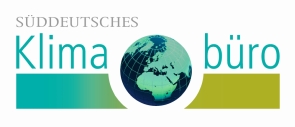System for Classifying the Damage Effects of Frost Periods on Concrete
- contact:
Andreas Riehl
Hans Schipper
Michael Haist (KIT-IMB) - funding:
KIT
- Partner:
- startdate:
07.2012
- enddate:
10.2012
Despite its comparatively high durability, the material concrete is also subject to progressive degeneration, which can vary in severity depending on the type, intensity, and duration of the corrosive attack. One of the significant attack mechanisms is frost or the combined frost-deicing salt attack. The damage to concrete caused by frost is directly related to the formation of ice on the surface and within the porous structure of the concrete, particularly in its cement matrix.
The project aims to develop an appropriate system for classifying the damage effects of frost periods with different minimum temperatures and durations on the durability of concrete. Using a classification system, it is possible to examine the results from climate research (observations and model simulations) regarding their damage effects on concrete. The system to be developed forms the foundation for coupling climate data with building material degradation models, thus representing a strong networking of research topics from the KIT competence areas 'Matter and Materials' and 'Earth and Environment.'
A central question in model formation is the recording and systematization of environmental data (temperature and humidity). Since civil engineering structures are generally designed for a service life of 100 years or more, the expected consequences of climate change for the structure must also be considered. In the field of climate research, extensive expertise in high-resolution climate modeling has been developed at the Institute for Meteorology and Climate Research in recent years. Numerous simulations with the regional climate model COSMO-CLM have been carried out and form the basis for the building-specific climate forecast aimed at here. In addition to basic research and intensive validation work, an ensemble of possible future climate development scenarios is created. Due to the high spatial and temporal resolution of this ensemble, it is possible to make region-specific statements on the topic of climate change. There are different applications for many results of the COSMO-CLM.
The representation of today's and future climate possible with these models allows detailed spatial and temporal statements about the local environmental impacts to which a structure is exposed.
This project involves the Institute for Meteorology and Climate Research with the South German Climate Office and the Institute for Concrete Structures and Building Materials Technology.
The project is funded by the KIT competence area 'Earth and Environment' with a Start-Up Budget (STUB).

